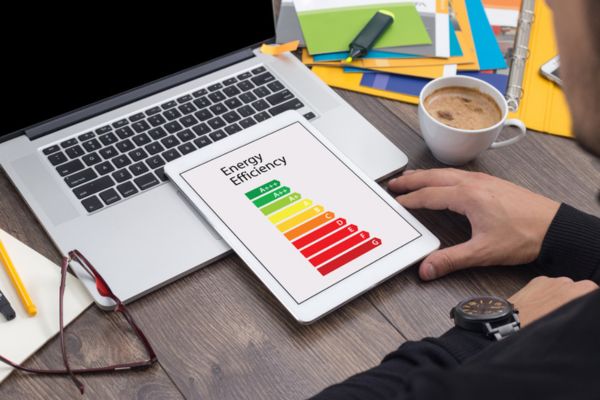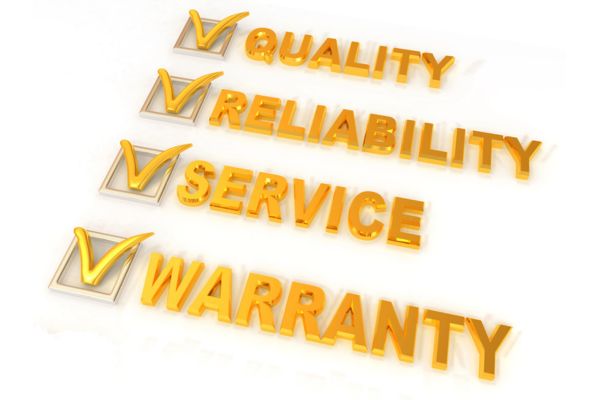Table of Contents
Seasonal Energy Efficiency Ratio, referred to as the SEER rating, is a critical metric to consider when purchasing or upgrading an air conditioner, as it directly impacts energy consumption and indoor comfort. The U.S. Energy Information Administration recommends a SEER rating of 14 or higher for residential HVAC systems, so understanding its significance is essential.
This article, by Lake Region Energy, provides insights about SEER ratings and their importance and relevance to your cooling system’s efficiency and cost-effectiveness. From navigating state-specific requirements to making informed decisions about your air conditioning investment, we’ll equip you with the knowledge to optimize your home comfort while minimizing energy expenses.
What Does An Air Conditioner’s SEER Rating Mean?
Your air conditioner’s SEER rating quantifies the cooling output of an HVAC system relative to its annual energy consumption. Typically falling between 13 and 21, a higher SEER rating denotes greater efficiency in the cooling system, indicating that it can produce more cooling output for the energy it consumes.
Significance of SEER Ratings

Understanding the SEER rating of an air conditioner is crucial before installation, as it offers several key benefits:
- Reduced Cooling Costs: Opting for a highly efficient HVAC system with the appropriate SEER rating can lead to lower energy bills. By efficiently cooling your home while consuming less energy, you can effectively cut down on cooling expenses.
- Enhanced Comfort: A proficient air conditioner should be capable of cooling a standard-sized residence by a significant margin within a reasonable timeframe. While factors like the unit’s size and age play a role, selecting the suitable SEER rating ensures optimal comfort levels in your living space.
- Environmental Responsibility: HVAC systems with higher SEER ratings can contribute to a greener environment by consuming less energy and emitting fewer greenhouse gases. Prioritizing an air conditioner with a high SEER rating aligns with eco-friendly cooling practices, promoting sustainability and environmental stewardship.
What Constitutes a Good SEER Rating?
In general, a SEER rating above 14 is considered favorable. However, determining the optimal rating for your needs requires considering various factors such as your home’s size, cooling requirements, and desired energy efficiency. A higher SEER rating indicates greater efficiency, but assessing your circumstances is essential.
Consulting with a professional HVAC contractor is advisable, as they can accurately gauge your home’s cooling demands and recommend the most suitable SEER rating. For instance, while a 14-SEER air conditioner might suffice for a smaller house, larger residences may necessitate a higher SEER rating to ensure efficient cooling.
Guide to Calculating SEER Rating

To ascertain the SEER rating of your cooling system, you’ll need to perform a simple calculation. Start by dividing the total cooling output for the year by the total electric energy input. First, calculate the cooling output by multiplying the British Thermal Units per hour (BTU/h) by the number of cooling hours per day, then multiply this figure by the number of days the cooling system operated within the year.
To illustrate, if your air conditioner operates at 5,000 British Thermal Units per hour (BTU/h) for 12 hours a day, over 180 days, the total cooling output for the year would be 10,800,000 BTUs. If your total energy consumption for the year amounts to 700,000 watt-hours (Wh), you can calculate the SEER rating as follows: divide the total cooling output (10,800,000 BTUs) by the total energy consumption (700,000 Wh), resulting in a SEER rating of 15.4.
Stay cool and worry-free: let Lake Region Energy’s HVAC experts handle all your air conditioning needs with precision and care. Call now!
Where to See Your AC Unit’s SEER Rating
The US Department of Energy mandates HVAC manufacturers to prominently display the SEER rating on their cooling systems, often accompanied by the Energy Star label for qualified models. To find the SEER rating on your air conditioner, begin by locating a distinctive yellow and black sticker, typically affixed to the side of the condenser unit. This sticker should prominently display the SEER rating.
Alternatively, you can check the air handler’s SEER rating. If neither of these methods proves fruitful, gather information such as the manufacturer’s name, model number, and serial number and conduct an online search for the HVAC system or contact the manufacturer directly.
Should you find this process daunting, consider enlisting the assistance of a professional HVAC contractor. Otherwise, locating the SEER rating should be straightforward, barring any unclear labeling by the manufacturer.
Understanding Mismatched Cooling Systems

For optimal performance of your air conditioning setup, the condenser unit and the air handler must be compatible. Manufacturers engineer air handlers to match certain condensers precisely, requiring HVAC contractors to install them as matched pairs. Unfortunately, this doesn’t always occur if you engage an inexperienced contractor.
Moreover, mismatches can also occur when the size of the air conditioner aligns differently from your home’s requirements. If the unit is too large, it results in short-cycling, where the system rapidly turns on and off without adequately cooling or dehumidifying the space. This compromises indoor air quality and comfort while escalating energy consumption due to frequent cycling. Conversely, an undersized system runs longer cycles, straining your cooling system leading to premature wear and tear, frequent repairs, and inflated energy bills.
Regardless of the SEER rating, a mismatched system diminishes HVAC efficiency. It’s crucial to ensure that your installer comprehends this to avoid such issues. Consulting a qualified HVAC contractor like Lake Region Energy can help prevent the pitfalls of mismatched cooling systems and support optimal performance and energy efficiency for your home.
Transform your home’s comfort in the warmer months. Schedule your comprehensive HVAC system assessment with Lake Region Energy today.
Additional Considerations When Selecting a Cooling System

Beyond the SEER rating, several other factors warrant consideration when choosing the ideal HVAC system for your home:
- Air Conditioner Size: It is crucial to choose a cooling system that matches your home’s size. Oversized or undersized units tend to consume more energy, leading to inefficiencies and potential comfort issues.
- AC Unit Price: When selecting an HVAC system, it’s essential to adhere to your budget. Consider the initial purchase cost and long-term operating expenses to ensure cost efficiency.
- Cooling System Noise: Efficiency and noise levels often go hand in hand. Less efficient air conditioning systems tend to generate more noise as they strain to meet cooling demands. Select a unit with noise-reducing features for enhanced comfort.
- HVAC Warranty: A comprehensive cooling system warranty provides peace of mind by guaranteeing replacement or repair in case of system malfunctions or failures. Prioritize systems with robust warranty coverage to safeguard your investment and mitigate potential repair costs.
Invest in long-term comfort: partner with Lake Region Energy for tailored HVAC solutions and personalized service you can rely on! Call us today!
Conclusion
Understanding the SEER rating is pivotal in selecting an efficient air conditioning system that balances comfort and energy savings. The U.S. Energy Information Administration recommends a 14 or higher SEER rating so homeowners can optimize their cooling systems to suit their needs while minimizing energy expenses.
Consulting with a professional HVAC contractor ensures proper installation and compatibility, avoiding potential pitfalls such as mismatched systems. By considering factors like size, price, noise level, and warranty coverage alongside the SEER rating, homeowners can make informed decisions to enhance comfort, efficiency, and long-term satisfaction with their cooling systems.
Contact Lake Region Energy For Reliable HVAC Solutions
Lake Region Energy is the premier choice for heating and cooling services in Maine and New Hampshire. Our team comprises professionally certified technicians who deliver exceptional HVAC tune-ups, repairs, installations, and replacements. Each technician possesses the expertise and experience to service your HVAC system precisely.
We take pride in offering the region’s most competitive rates for heating and cooling services. Our maintenance services enhance your comfort and boost energy efficiency while reducing home cooling expenses. Whether you require HVAC repair or a replacement system, you can trust us to recommend the best solution for your home within your budget. We stand behind all our work with a satisfaction guarantee.
Schedule a service appointment with Lake Region Energy today and take advantage of our free, in-home estimates.
For more information about our fuel deliveries and HVAC services, be sure to contact Lake Region Energy. You can click here to contact us, or you can call us at (207) 839-5500 to find out more. We offer a full line of heating and cooling repairs, maintenance services, and installations. Click the link to view our service area.

Related Articles:
- Unlocking the Mysteries of Air Conditioning: Unveiling Fascinating Insights
- Understanding Air Conditioner Condenser Rust: Essential Insights & Tips
- Beat the Heat: Typical Air Conditioner Problems to Watch Out for This Summer
- Understanding Filter Varieties: HEPA vs MERV Air Filters
- The Hidden Dangers of Skipping Air Filter Changes
